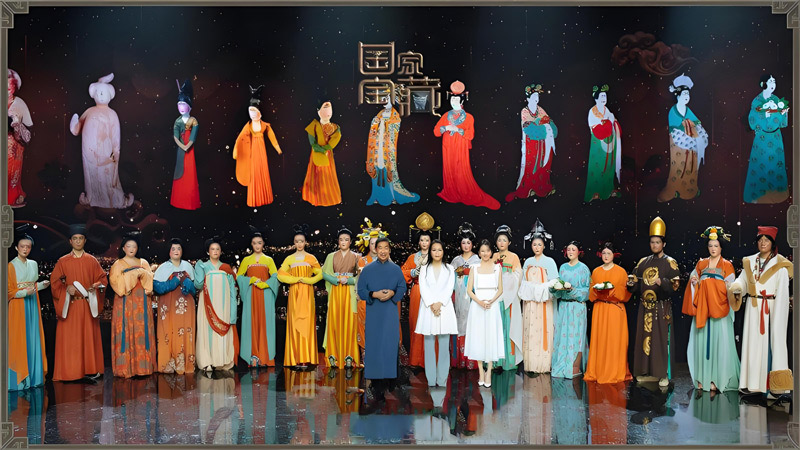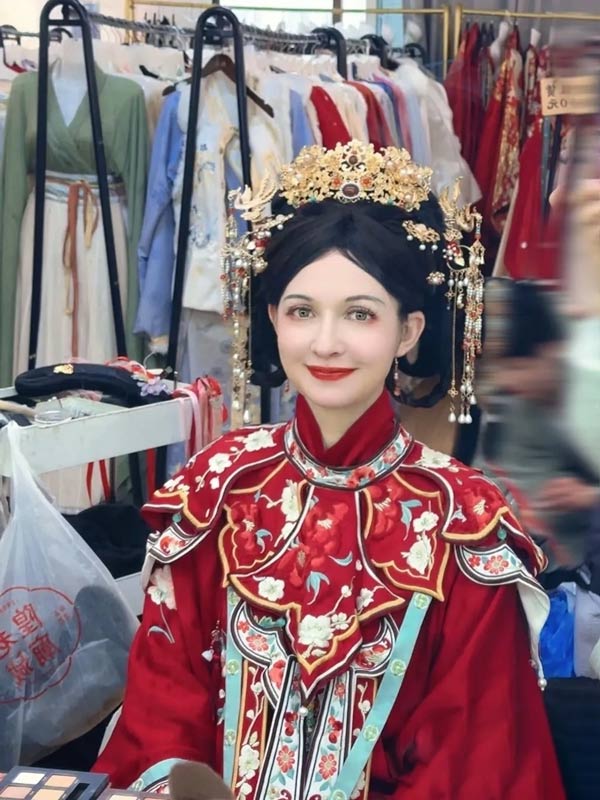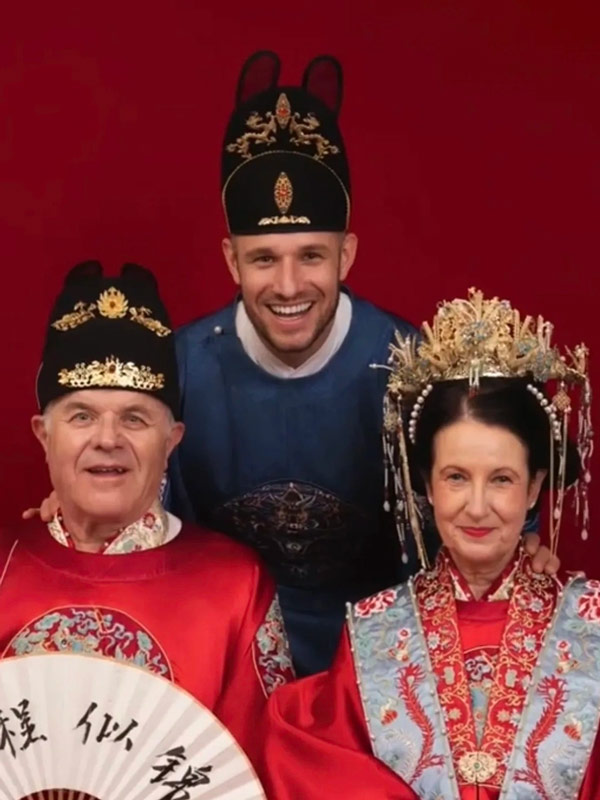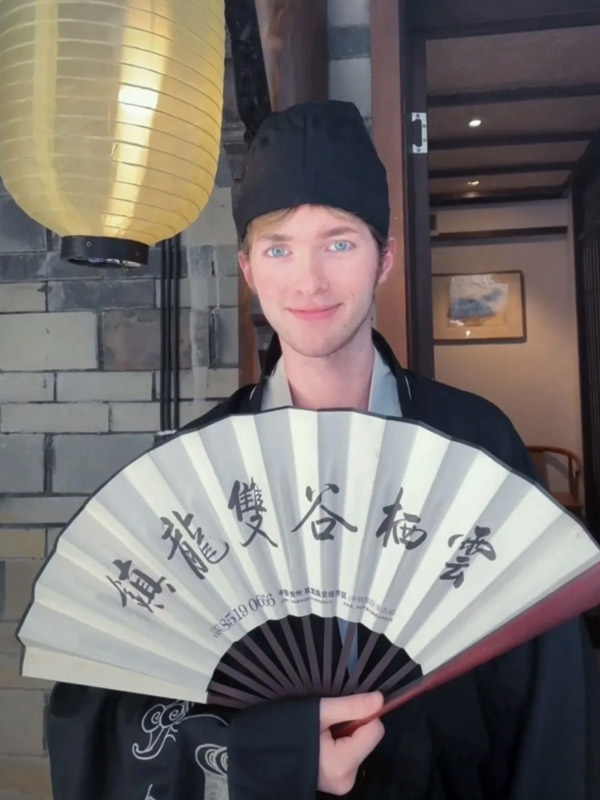
The rustle of embroidered silk now echoes from Shanghai's Tianzifang to Xi'an's ancient walls as international travelers embrace hanfu with infectious delight. What began as cultural curiosity has blossomed into a full-blown transnational phenomenon, with foreign influencers and tourists donning Ming dynasty robes and Tang-style ruqun to create viral content that transcends language barriers. This sartorial bridge between eras and continents reveals how traditional Chinese garments are becoming 21st-century cultural connectors.
Destination Dressing
Historic sites transform into immersive stages where hanfu unlocks deeper travel experiences. In Suzhou's Humble Administrator's Garden, Slavic creator Ana Petrovna floats across zigzag bridges in blush-pink chiffon, her movements harmonizing with centuries-old pavilions. The visual poetry of her ensemble against classical architecture drew thousands of Instagram saves.
Urban studios cater to global clients with specialized services. Shanghai's Hanyi Huashang studio stocks plus-size options and offers bilingual styling consultations. "We adjust makeup for deeper eye sockets," explains owner Li Mei, noting 40% of June bookings came from overseas visitors.
Iconic landmarks inspire theatrical transformations . At Xi'an's Drum Tower, British photographer Tom Higgins commissioned a dragon-embroidered emperor's robe. "The weight of the gold-threaded cloak made me stand differently—more regal," he laughs. His "Three Imperial Poses" reel trended on TikTok for three days.
Threads of Belonging
Family bonds strengthen through shared hanfu moments. German vlogger Wu Yuxiang (吴雨翔) gifted his parents Ming-style crimson wedding robes for their 40th anniversary. His mother's trembling hands tracing the phoenix crown's pearls became Weibo's most-shared clip that week.
University exchange programs incorporate hanfu experiences . Turkmenistan student Mordan at Xi'an Electronic Science University leads campus hanfu societies. "Wearing ruqun while reciting Tang poems," he says, "makes Du Fu's verses feel alive in my bones".
Cultural barriers dissolve in dressing rooms . French travel blogger Eliot Lamarre recalls the intimacy of having artisans adjust his sapphire-blue shenyi: "Their fingers smoothing the silk felt like receiving a heritage".
From Curiosity to Canon
Social media algorithms favor cross-cultural content. Ana Petrovna's hanfu series reached 2M+ views when paired with #EastMeetsWest hashtags. Her followers now request tutorials on "how to walk gracefully in moon-shaped sleeves".
Hybrid aesthetics emerge from global interactions. Beijing's "Cloud Weavers" studio developed gold-sprayed wigs to complement European features—a fusion celebrated at Milan Fashion Week's digital exhibition.
Sustainable practices attract eco-conscious wearers. Hangzhou's "Silk Road Revival" project uses natural indigo dyes favored by Scandinavian clients. "Seeing Finnish teens choose hanfu over fast fashion," remarks designer Zhang Wei, "proves tradition's renewable appeal".
Museum collaborations validate contemporary relevance . The Shanghai History Museum now displays modern hanfu alongside Ming dynasty artifacts, featuring Palestinian influencer Leila's viral Forbidden City photoshoot.
The hanfu wave rolling across continents represents more than sartorial appreciation—it's cultural dialogue woven in silk. As Israeli newlyweds twirl in Song dynasty finery before Shanghai's skyline, they embody how ancient garments can stitch together humanity's shared beauty. This renaissance proves heritage worn is heritage reborn, with every ribbon tied and sash fastened writing new chapters in global style consciousness.
Hanfu’s future gleams brighter than golden-thread embroidery. With Beijing backing "garment heritage" initiatives, universities now offer Hanfu design courses - while eco-brands pioneer hemp-based dyes to replace synthetics. As UNESCO-listed craftsmanship gains protection, artisans like Zhao Shuxian (master of ronghua velvet flowers) supply luxury houses, transforming ancient techniques into haute couture.
Yet challenges linger. Standardizing sizes for diverse body types remains urgent, and museums struggle to archive 200+ regional styles. Still, as Rachel’s Boston Hanfu Society hosts Polish-Japanese fusion weddings, one truth emerges: Hanfu isn’t returning—it’s evolving. From Kazakhstan’s Confucius Institutes to New York Comic-Con, these robes now weave a planet-sized community where history is always in vogue.



